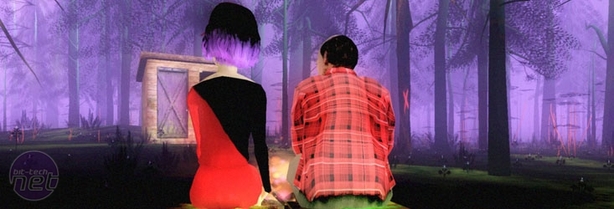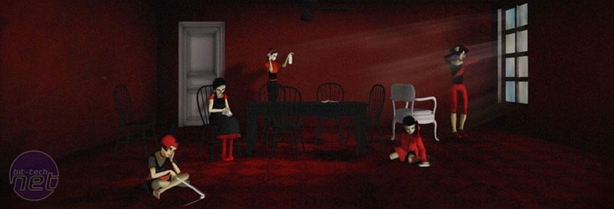
The Path Interview - Are Games Art?
After playing The Path recently, we’ll admit that we were left very disturbed, but also very impressed. The Path was an utterly uncompromising effort to use games as an artistic platform, and it was one that left our nerves in tatters.With that experience still fresh in our minds, we felt we just had to catch up with Tale of Tales’ Auriea Harvey and Michaël Samyn, the lead designers and directors for the game, to see what they had to say.
bit-tech: The first and most obvious question is; where did the inspiration for The Path come from and do you see it more as a game or a piece of art?
Tale of Tales: The original idea for The Path came up when we were working on a title called 8, years ago. 8 was a dreamy exploration game based on the fairy tale of Sleeping Beauty and featured a young deaf mute girl in a pretty white dress. We wanted to have this girl “visit” other fairy tales as well. And each fairy tale would lend itself to a different genre of game. 144 was going to be the name of our horror game based on Little Red Riding Hood.
It was only years later that we started developing ideas for the actual design of the game. This went through several iterations on paper and was only completed after making prototypes and especially hearing the music that Jarboe had made for the game. Her music was one of the main inspirations for the mood and atmosphere.
We are artists and have made The Path as a work of art. But as artists, we like our work to be accessible. This is one of the reasons why we choose to make games that can be distributed easily and are accessible to many (as opposed to creating interactive installations for museums and galleries that few people understand or enjoy).
BT: Do you think that the ‘games as art’ concept is starting to accrue more legitimacy now, or is there still a big divide between games as games and games as art? Are there things you think games can do very well artistically?
ToT: The divide between games as games and games as art is not a problem. Not all games need to be pieces of art. Many games are made purely for entertainment. And that’s fine. Many people enjoy them. But some people like to be entertained by things that are also meaningful and helpful. Those people will be more attracted to art and we are making games for these people.
We do not think of games in general as art. Games are a form of amusement; nothing more, nothing less. But since computers have been used for the creation of games, and especially since the technology has evolved to allow for very rich representations, a new form has arisen. Computer games are very different to games from the past because they have a great potential for meaning, expression and beauty.
Computer games are showing us a glimpse of the artistic potential of the interactive medium. The immersion, the emergence and the non-linearity of games are elements that are of utmost importance to contemporary art. We find it a pity that there aren’t more artists embracing the medium.
BT: Can you tell us more about the process of developing the game and how you got it off the ground?
ToT: Well, the initial idea is relatively old but remained vague for a long time. Even when we acquired the first funding for the game (from Creative Capital), we weren’t exactly sure what we were going to do with this “Red Riding Hood horror game” concept, but it did enable us to start working.
In the beginning we didn’t know if this was going to be a small scale artistic experiment or a larger, more commercial title. We decided that the game had commercial potential and started developing it as such.
It took several more rounds of requesting and acquiring funding from diverse sources to finally get the production budget together. All this time, we continued to work on the game. This culminated in a “vertical slice” demo that we finished just in time for last year’s Independent Games Festival. The demo was nominated for Excellence in Visual Art. After that, we basically crunched for a year to finish and launch the game before we ran out of money.

MSI MPG Velox 100R Chassis Review
October 14 2021 | 15:04











Want to comment? Please log in.